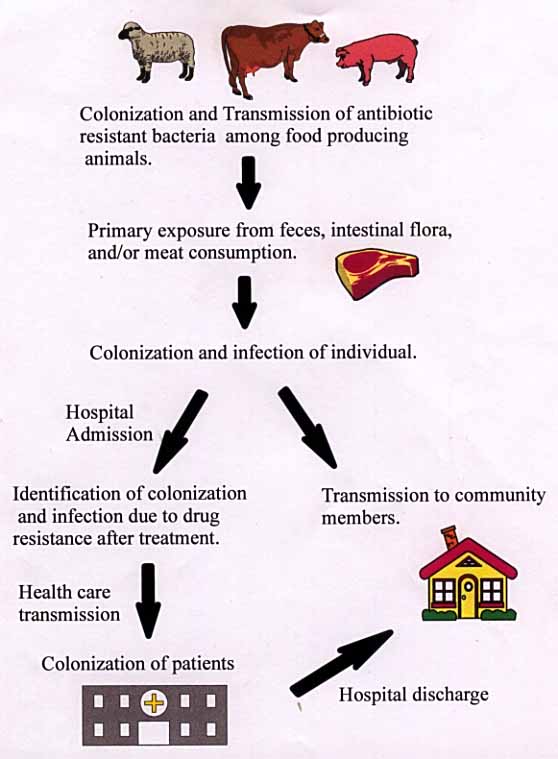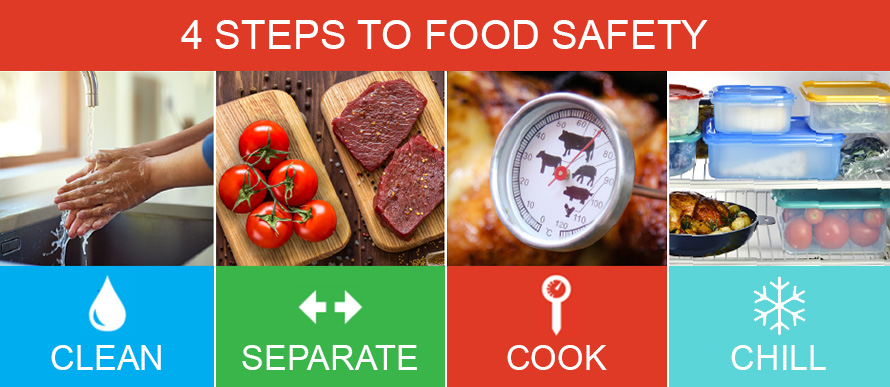
Food production and distribution has evolved dramatically from the early 1900s to present day; decentralized family-owned and operated farms have been slowly replaced and dominated by large-scale industrialized farming systems with corporate vertical integration.1 American meat consumption per capita (to include beef, pork, lamb, fish, chicken, and turkey) is currently 90.5 kg/year placing a large demand on farmers to grow and process animals.1(663) However, methods to produce high rates of food production have deviated, considerably, from farming practices a century earlier. Decentralized approaches to feeding a nation has placed a large demand on farmer productivity, which has induced tangible changes in food quality and food-borne illnesses.1(663) As a means of appreciating such changes, the following will explore the same.

Large scale animal food production has been achieved by increasing density of animals in a given lot and by introducing feeds designed to increase growth rates and feed conversion efficiency.1(663) Sapkota et al.1(663)further stated that animal feed is an aggregate of substances such as, but not limited to, antibiotics and animal waste; such unusual and foreign inclusions of ingredients have provided a fertile ground likely to harm animals and downstream consumers. The U.S. animal feed industry is the largest in the world producing 120 million tons per year; such a robust industry is maintained by using the aforementioned animal feed constituents like animal waste to include poultry and ruminant litter.1(664) Said practices have been in place for over 40 years and is not adequately enforced at a state or local level. Furthermore, there is concern that pathogens and drug residues from animal waste may be entering the animal and possibly individuals who consume said meat.1(664)

Antibiotics are another component of animal feed used to promote growth and enhance feed efficiency.1(665),2 However, such a practice has become the impetus for antibiotic-resistant bacteria (ARB) such as Enterococcus faecium, E. coli, and Salmonellaspp..1(665) Such ARBs have been discovered in 3 major locations to include animals consuming antibiotics, animal-based food products produced downstream, and the water/air/soil samples collected near such farms.1(665)Drug-resistant bacteria produced from excessive medicating of animals may be transmitted and impact individuals who are exposed to infected meats; such individuals may not be able to overcome exposure increasing likelihood of illness and disease.1(667) When combined with the use of animal waste products for food, the likelihood of bacteria and ARB transmitting to human hosts has become a public concern.1(668)

Though a contentious topic among government agencies regarding who should improve animal processing and distributing practices, it is also incumbent upon the consumer to be both informed of the potential presence of pathogens/antibiotics to manage said challenges.2(28-29) Only then can bacteria, protozoa, and viruses be managed in a way that is more effective at reducing risk; management at the production end, and management at the consumer end. Some strategies for managing microorganisms, such as E. coli,could include cooking meats, such as ground beef, thoroughly at temperatures of 71ºC, washing hands/exposed surfaces after handling raw food, separating meats and utensils from other foods, and refrigerating meats promptly.2(119) Although the scope of this author’s discussion involves contaminated meats, vegetables can also present with similar microorganisms since raw animal waste is often used as fertilizer, increasing chances of contamination to the consumer.2(44) As such, it is reasonable to note that similar cooking and handling approaches applied to vegetables and fruits before consumption is also of value.
In conclusion, centralized food production and distribution has grown dramatically from the early 1900s to present day; large-scale farming systems have placed increased demands on growing and processing animal meats in an expeditious fashion. As an inherent consequence, foods and pharmaceutical interventions have been used to maintain supply to corporations distributing meats across North America. Such approaches have caused increased outbreaks of illness among one in four Americans each year.3 Thus, consumers must employ vigilance when handling and preparing meats/vegetables in conjunction to animal production corporations and farmers improving feeding and processing practices.
References
1. Sapkota AR, Lefferts LY, Mckenzie S, Walker P. What do we feed to food production animals? A review of ingredients and their potential impacts on human health.
Environ Health Perspect. 2007;115(5):663-670. doi:10.1289/ehp.9760
2. Nestle M. Safe Food. Berkley, CA: University of California Press; 2003.
3. Tauxe RV. Emerging foodborne pathogens. Int J Food Microbiol. 2002;78(1-2):31-41. doi:10.1016/S0168-1605(02)00232-5.
-Michael McIsaac
